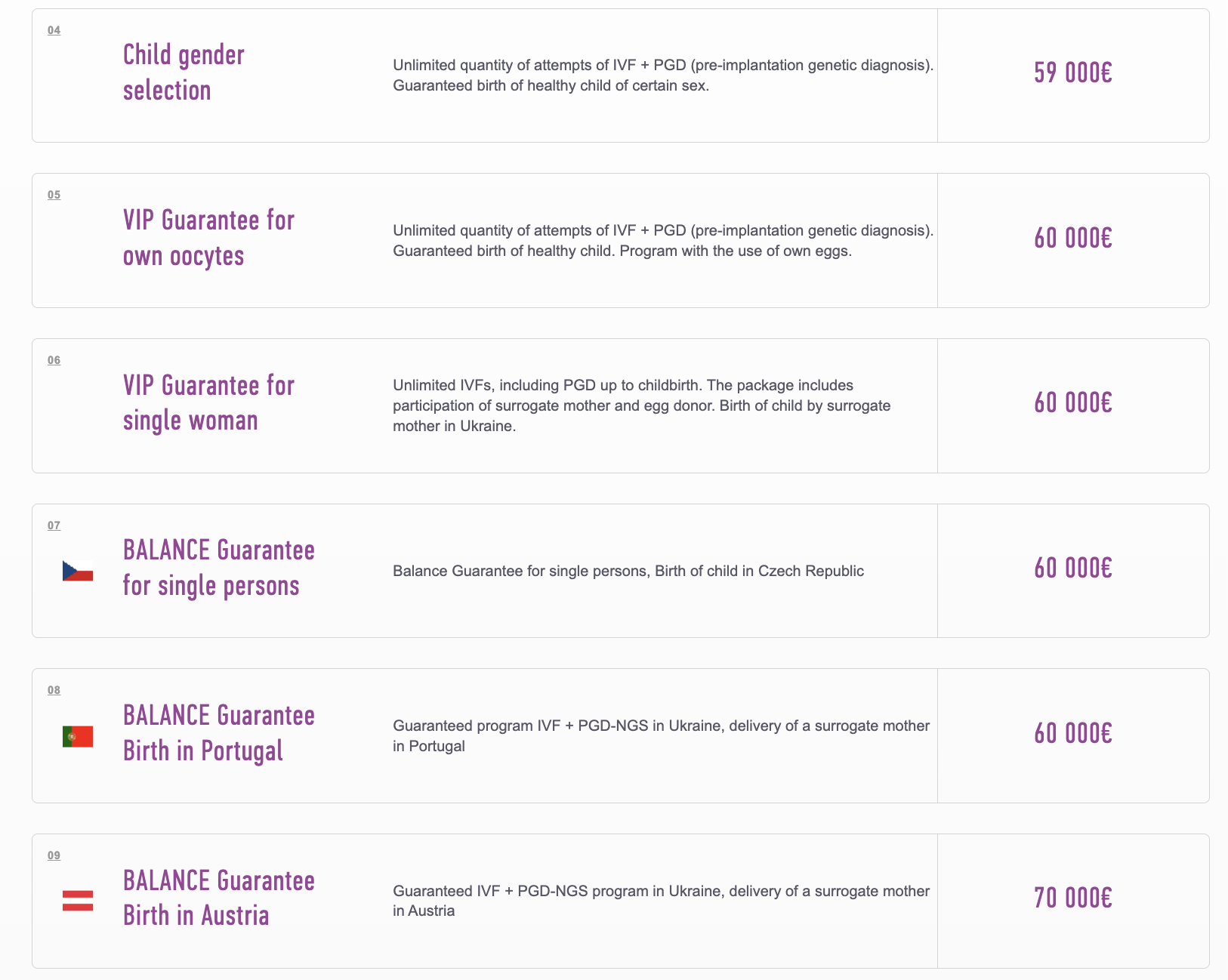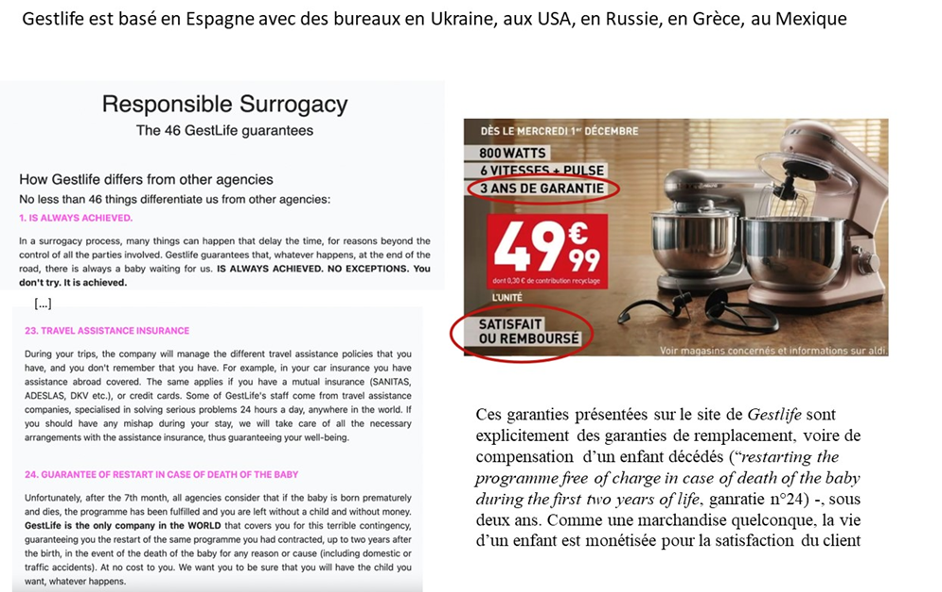Considered by some as a medical breakthrough and interpreted as an assisted reproduction technique, this view hides a social practice that must be assessed in terms of human rights.
It is a mistake to consider it as a medical technique to assist reproduction.
Surrogacy is a social and commercial practice based on a medical technique.
Artificial insemination and in vitro fertilization, two medical practices, are used in the process of surrogacy to implant donor gametes. Nevertheless, surrogacy remains a social practice because it serves a social demand: that of clients who claim a “right” to parenthood or a child.
Moreover, surrogacy is more than just insemination or IVF; it is a process that involves different phases imposed on the surrogate mother:
- Recruitment
- Signing the contract
- IVF (in vitro fertilization, repeated if unsuccessful)
- Psychological support to help distance herself from the pregnancy
- Medical supervision of the pregnancy
- Delivery
- Delivery of the child to the client
- Renunciation of her filiation with the child she carried
- The postpartum period and all the risks associated with pregnancy
This process is an industry that involves a considerable number of players: agencies, clinics, medical laboratories, lawyers, psychologists, accommodation facilities for both clients and surrogates, banks to finance the commissioning parents…(etc).
Most of these actors do not belong to the medical field, but to the commercial field, which offers two products/services: the birth of a child and its adoption by the commissioning parents.
The commercialization of surrogacy requires aggressive marketing techniques that promote increasingly sophisticated offers that are applied with impunity to human beings, women and children:
- Personalization of the product: choice of the child’s sex (see below), choice of the physical, social and behavioral characteristics of the egg donor and the surrogate mother.
- Quality control: the pregnancy is carefully monitored and amniocentesis is almost systematically performed, although it is often unnecessary and dangerous, since the water sac is pierced to take samples of the amniotic fluid.
- Sophistication of offers in the form of packages tailored to the client’s financial capacity [1](see examples below).
- Promotional offer: the price of the second child in the case of a twin birth is considered an additional cost, $8,000 in the above example [2]out of a total cost of $145,000, which is very attractive for the commissioning parents and less so for the surrogate, given that a twin pregnancy is particularly risky and that 70% of twins are born prematurely.
- Sale: The BioTexCom clinic in Ukraine has published a promotional offer in November 2021: the “Black Friday surrogacy”. For this exclusive day of sales, the agency offered gestational formulas with a discount of between 1,200 and 1,500 euros for a child born to a Ukrainian surrogate [3]. And who will benefit from this discount?
- Home birth: the surrogate mother can be transferred outside her country of origin a few weeks before the birth, to a country chosen by the commissioning parents for their personal convenience.
- Replacement guarantee: Gestlife offers to repeat the surrogacy procedure free of charge if the child dies within two years[4].
Surrogacy is not the answer to infertility either
Surrogacy is misrepresented as a medical answer to infertility, but it cures no one: neither the commissioning parents who are unable to have a child, nor the surrogate mother who is a fertile woman in perfect health, nor the homosexual couples who are also in perfect health. Classifying surrogacy as a medical practice is, in fact, a way for this industry to hide its true nature: a system for exploiting women’s reproductive capacities.
Asking a woman who does not want a child to carry a pregnancy to term and then handing the child or children over to the buyers cannot be considered a medical practice.
Surrogacy is not inevitable
The main argument in favor of regulating surrogacy is the doctrine of the fait accompli, according to which the existence of the practice, considered inevitable, requires a legal framework. To adopt a regulatory approach is to refuse to question the very nature of this practice, what it implies, namely the fact that certain human beings can be transformed into means at the service of others. Just like prostitution – a system of sexual exploitation. Surrogacy would not exist without the patriarchal demand for filiation.
When a couple or an individual is unable to conceive a child due to medical problems or sexual orientation, another option is available: full or simple adoption.
The principle is the same as that of surrogacy since adoption allows a child to be accompanied into adulthood. Both practices respond to the same desire for a child. However, the main difference is that adoption is a practice of solidarity and not a commercial practice.
Above all, it is the genetic link between the sperm donor and the newborn child that is sought.
From this point of view, the patriarchal genetic link would erase the violence and exploitation of the surrogate mother, masked by the “medical” image forged to make acceptable this social practice that violates human rights. It could even be an attempt at manipulation, and certainly not a medical breakthrough.
Screenshots corresponding to the above cases



[1] https://www.surrogacyfr.com/
[2] https://www.sensiblesurrogacy.com/sensible-surrogacy-in-the-united-states/
[3] https://www.marianne.net/agora/tribunes-libres/black-friday-gpa-desormais-la-grossesse-pour-autrui-est-soldee
[4] https://www.uk.gestlifesurrogacy.com/guarantees-in-surrogacy.php
